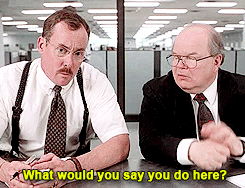The Toronto Maple Leafs' 2021-22 season is under way, and it wouldn’t feel right if everything was hunky dory. Some things are decidedly not, including a surprisingly off D pair, a goalie’s groin and a few forwards, all of which we’ll get into below.
But one thing that’s for sure with the Leafs both present and past, is that one player was always gonna be at least hunky – that being William Nylander – you just had to be Dory and forget his off nights to really enjoy watching him play. Through two games, ol’ Willy Styles hasn’t had a bad one yet, and it’s not just his offence that’s been impressive. Let’s get into Leafs trends, through two games.
Nylander looks like a grown man
The complaints about Nylander, at least the justifiable ones, haven’t been that he isn’t good, it’s that he’s really good, but he just wouldn’t bring it as consistently as the game’s elite. At his best he’s hard on pucks, he wins battles for it, and that leads to chances and of course, goals. He demonstrated the best of his game in last year’s post-season, and it’s carried over to this season.
In my time as a video coach I loved to find and clip trends, and this one was absolutely blinding, so I thought we’d have a little GIF party today. They’re all really short, it’s just crazy there’s so many; you’d usually need a half dozen games to find this many clips of one player being this assertive on the puck.
No, you cannot have it, it belongs to Bill.
This isn’t the great point, but we’ll start with an offensive play just to show his comfort in traffic. Nasty little slip, and 85 in front can’t slow him down.

Look at how he invites contact below, confident that it won’t disrupt what he wants to do next. Great cutback, too.

Watch him work to get this puck back, going under the opposition’s stick. A lot of these plays get the puck back to the point.

Below he’s still thinking about the puck while the Montreal defender has his hands full just trying to contain the body.

Under the opposing stick, winning back pucks.

Under the opposing stick, that’s mine thanks.

Under sticks, winning back pucks.

A 50/50 puck off a draw ends up all the way down in Ottawa’s end.

Confident taking it across the net, and stays in pursuit.

On Thursday, Nylander led the game in slot shots, controlled entries and exits, you name it really. He was the guy.
At 25 he’s physically matured, and is as strong as any offensive forward in the league. Expectations will be high because we all know that now...much to his chagrin. When he’s on like this – as he has been for some stretch in a row now – he’s an absolute force.
The duality of Pierre Engvall
One thing about resentments, is that they start with expectations. That’s my theory for why Sheldon Keefe occasionally takes issue with Pierre Engvall – Keefe knows what Engvall can do, expects him to do it as he did in the first game against Montreal, then he gets let down by the type of play Engvall gave him Thursday night. And then Engvall ends up in the dog house.
On Wednesday I praised Engvall on Real Kyper and Bourne for doing something he hadn’t been doing in previous years: going forward with the puck. When Keefe first came to the Leafs he green lit everyone to maintain possession. Curl back rather than dump it to the opposition, regroup, and take another rush. All Engvall heard was permission to go the wrong way, and everything he touched he took towards his own net. Against Montreal, he went the right way: forward. Huzzah!
Here’s the thing about team rules: they can’t apply to everyone. Engvall should by-and-large be a straight-line dump and chase machine. Nobody 6-foot-5 who skates like him should be allowed to skate in any direction but directly at the opposing net. The freedom to curl back should not apply to him.
Take it towards their net.

With as much speed as he has below, just chip it in and chase it.

It’s not just about where you go with it: it’s how you prepare yourself before you receive it. It seems like he’s always an option that’s moving in the wrong direction (when he’s bad).

You don’t need Engvall to be great often, but those nights will happen because he’s got so many tools. You just need him not to be bad when he’s not having a great night, and he can do that by simplifying.
Michael Bunting has been as advertised
I worry about players who draw penalties not with their play (like being fast and driving the net a lot), but with their antics, because eventually refs wise up and realize they’re at the root of a lot of the problems they find themselves in. Nazem Kadri drew a lot of penalties before refs caught on, and that feels like where Bunting could find himself. That said, full credit to him, he drew two penalties in the first two games, and both power plays directly translated to goals for the team.
He was also excellent on the offensive side of the puck, trailing only Nylander in slot shots on net last game with five. Bunting’s had a ton of chances, he’s been all over the crease, and if he can keep that performance up, he’ll put some in the net this year.
The Holl/Muzzin pair has struggled
Justin Holl and Jake Muzzin get handed, by far, the hardest assignments of any players on the Toronto Maple Leafs (specifically their D). They start in their own zone and they face tough competition. Justin Holl’s superpower up until this point has been that he still tends to drive play in a positive direction despite being put at such a big disadvantage. Jake Muzzin’s superpower is turning guys like Holl into guys who have perceived NHL “superpowers” at all.
Unfortunately, it hasn’t been pretty so far. Of the 18 Leafs skaters who’ve played, they’re 17th and 18th in Corsi percentage. After two games with them on the ice, about twice as many shots have gone against the Leafs, rather than at the opposition’s net. They’re both good players who didn’t suddenly turn bad. But if they’re less effective this year, that would be a capital-P Problem for the Leafs, who rely heavily on this pair, particularly in playoff hockey.
Which brings us to a curious counterpoint…
Sandin and Dermott have been the Leafs' best D by the numbers
They’ve been playing against the weaker part of weaker teams, and getting more favourable zone starts, but they’ve crushed those minutes so far. Sandin in particular looks excellent, the pass he makes at the end of that Bunting package above showed great vision. The bigger stat categories just after boxcar numbers (the various forms of shot attempts, expected goals) have Nylander, Sandin, Bunting, and Dermott at the top. By eye test, Sandin has been really good.
So without wanting to do anything just yet, I can’t help but wonder: is there a world where the D pairs could change? Could Sandin take a crack at the right side along Muzzin, with Dermott/Holl joining forces as they did en route to a Calder Cup? You want to give everyone more games here first, of course. And handedness limits them, but with a softer second pair right now and a thriving third pair, some sort of shuffling there may eventually be considered.
Marner’s either trying to be perfect or shooting poorly, your call
Through two games Mitch Marner has fired 19 pucks at the net and hit it just 10 times. I thought of this early against Montreal, where he had a couple good looks where he failed to make the goalie make a stop, and I couldn’t help but wonder if all this off-season talk about him working on his shot, finding his shot etc., hasn’t led him to try to be a little too perfect with it. This was a trend on the power play last season, where he failed to get attempts on the net at a rate far worse than his teammates (and most flank players).
Plenty of MLB pitchers have great careers without the overpowering heaters. Here in Toronto, Hyun-jin Ryu put up a couple great years doing it. Some guys pitch for contact. Mitch might pick up a few more assists by putting a few more pucks on the net, making the goalie make saves, and hopefully creating a few more rebounds.
Nick Ritchie

I recognize that’s a mean GIF, as there’s a lot of pressure on the guy, but the exact problem that’s led him to being let go by the Bruins surfaced through two games with the Leafs. He’s huge, he can finish, he has good hands, etc. How can you go 120 minutes of hockey without anyone noticing you?
He won’t last long in that roster slot without contributing something in some area, whatever it may be.
Good early returns on Kampf and Kase
David Kampf and his line have been used in tough minutes. Heavy D-zone starts, against good players, and he’s seen PK time (including 3-on-5 minutes). He’s been excellent, and it seems they’re excited about him.
In game one against Montreal, Kase was near the top of the team in slot shots and chances and was all over the rink. He lost steam in the game two, but there’s a good, useful player there. Good starts for these two, and the third line overall (barring the aforementioned Engvall moments).
And finally,
Petr Mrazek’s debut
He was good through 40 minutes, despite giving up three. He made a number of good saves and was super unlucky. If he’s out a while now, do you trust Michael Hutchinson to do the job? Two years prior he was terrible for them, but was good last year. The good news is, there’s only a couple back-to-backs over the next month, so you likely won’t see him much. That is, assuming Jack Campbell’s healthy. And that’s never been a problem before … has it?
That’s it through two games for now. We’ll check back in next week after the Leafs attempt to exact some revenge on the Sens this Saturday.

